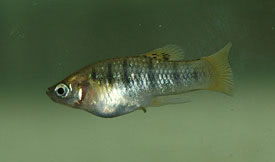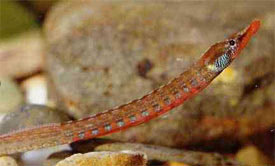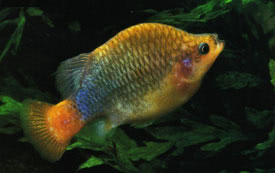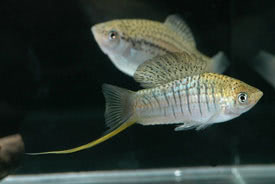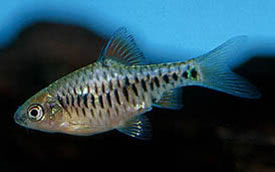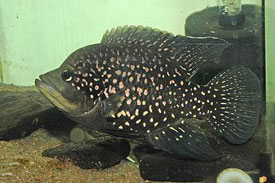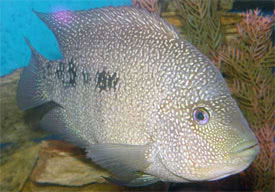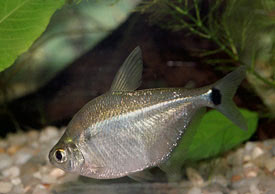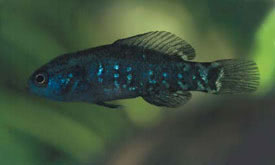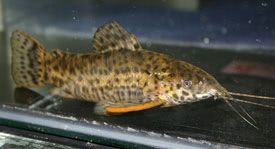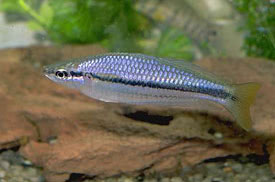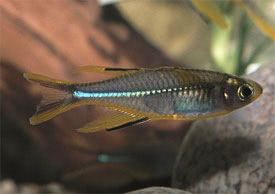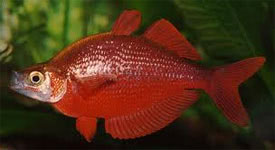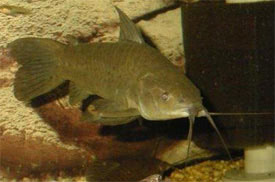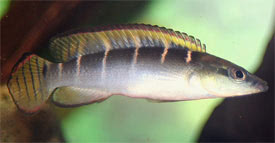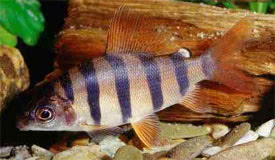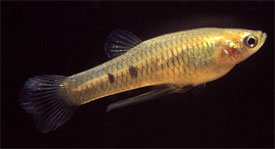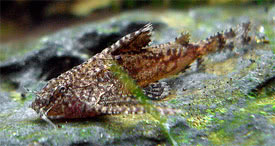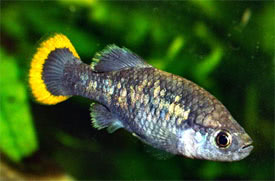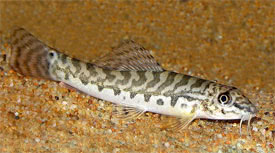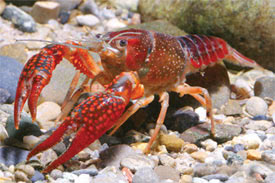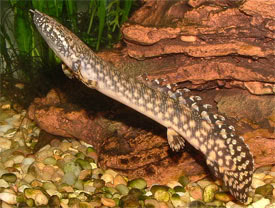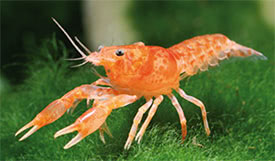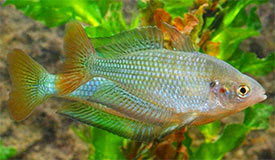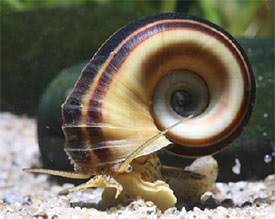
 Magyarul / Hungarian
Magyarul / Hungarian
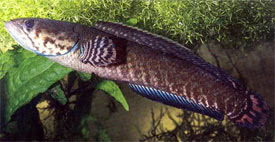
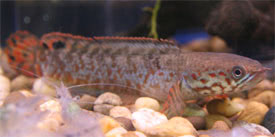
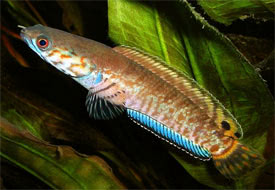
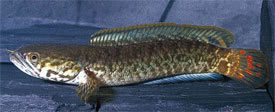
- Scientific name: Channa bleheri
- Synonyms: -
- Common name: Rainbow Snakehead
- Group: Other fishes
- Habitat: Asia; India
- Size: 20 cm
- Biotope: Endemic to the Brahmaputra River basin, in tropical rainforest streams, ponds and swamps.
- Social behavior: Aggressive, predatory fish, one of the more placid snakeheads, but should not be kept with smaller fish that can fit in it’s mouth. Can be kept in a large community tank with similarly sized predatory fish or robust catfish. They can be maintained in pairs or even small groups in large aquaria but expect some fighting to occur.
- Diet: Carnivorous; it feeds exclusively on meaty foods such as prawns, earthworms and mussels. Dried foods will not be taken.
- Breeding: Rare in aquarium, but possible.
- Tank: Minimum 250 litres
- Population: 1 pair for 400 litres
- Decoration: Large aquarium with floating plants, that diffuse the light, and the fish usually become more active, and some hiding places. The tank must be well-covered as these fish are great escape artists.
- Temperature: 15-27 °C
- pH: 6-7,5
- Hardness: 10-25 NK°
- Lifespan: 8-12 years
Description: Rainbow Snakeheads have a greenish-brown body color with large irregular red and orange spots and iridescent bands, that sometimes coalesce. This is the most colorful of all snakehead species. The body is typical Snakehead in shape, with a broad head and long dorsal and anal fins with a rounded caudal fin. The fish named after the famous German fish collector Heiko Bleher, who discovered the species in 1987, in Assam.
Mature females are fuller in the belly. Males are larger then females of the same age, and are also grow faster. The male selects the nesting site, but the female appears to initiate courtship behavior. Some breeders say that a period of being maintained at a low temperature followed by a sharp rise stimulates the fish to spawn as it mimics the changing of the seasons in nature. Usually two days prior to spawning, there is frequent body contact between male and female, with the two wrapping around each other. This behavior increases at spawning, near the surface, and the spawning act can last up to 30 seconds. The eggs released are 1 mm in diameter, transparent and float to the water surface. Both the male and female initially tend the eggs mass and display an interesting behavior. They take the eggs into the oral cavity and expel them through the gills, presumably to remove materials that may settle on egg surfaces. The eggs adhere to each other at the surface. The eggs hatch in 24-48 hours and both parents guard the larvae. The young remain around the parents, often with body contact between them, and usually can be found on the heads of parents, appearing to be feeding on mucus. Removal of young from parents at this stage seems to slow growth of the separated individuals. When juveniles reach a length of 1 cm, the dorsum and sides of the body becomes canary yellow, with a dark bar on the head, angled from the tip of the lower jaw, through the eye, to the gill cover. The ventral side is colored smoke gray to black. As young continue to grow, their color becomes more pale and an ocellus appears on the posterior part of the dorsal fin.







